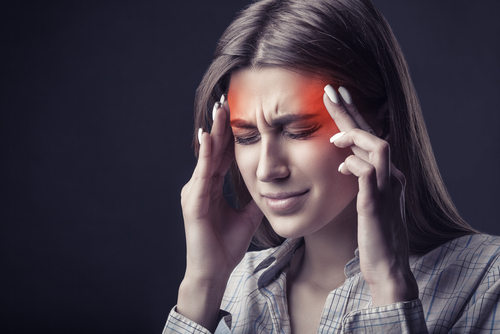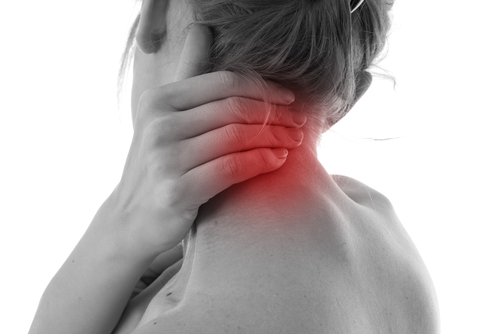Chronic fatigue syndrome (CFS), also known as systemic exertion intolerance disease (SEID) or myalgic encephalomyelitis (MC), is a complicated medical condition with no known cause. This syndrome arises when you experience fatigue and a drop in activity levels for at least six months that cannot be relieved by sleep or rest. Chronic fatigue syndrome is not a result of strenuous exertion and will significantly lessen your body’s ability to normally function.
Those who have chronic fatigue syndrome may also fit the description of those with fibromyalgia syndrome and vice versa. Because of this, there is often confusion between these conditions especially when there is no known specific cause or test to help the diagnosis. In order to diagnose a person with either chronic fatigue syndrome or fibromyalgia syndrome, they mostly look at their symptoms. Both conditions include symptoms of fatigue, trouble or unrefreshing sleep, cognitive impairment, dizziness, chronic widespread pain, and impaired coordination.
The difference between these two conditions are their primary symptoms: the primary symptom of chronic fatigue syndrome is fatigue while the primary symptom of fibromyalgia is pain. In addition, chronic fatigue syndrome is more likely linked to flu-like symptoms.
Symptoms of Chronic Fatigue Syndrome
Each person with chronic fatigue syndrome will have their own unique combination of symptoms they will experience. Apart from this, the intensity of their symptoms can vary. To determine if a patient has chronic fatigue syndrome, they must be experiencing fatigue, post-exertional malaise, sleep problems, and either cognitive impairment (brain fog) or have their symptoms feel worse in an upright position (orthostatic intolerance).
Listed below are common symptoms of chronic fatigue syndrome:
- Pain in muscles and joints
- Headaches
- Sensitivities and intolerance to heat, cold, light, noise, or alcohol
- Flu-like symptoms such as a low-grade fever, sore throat, or swollen lymph glands
- Anxiety or irregular heartbeat
Those who have chronic fatigue syndrome may also experience overlapping conditions, such as:
- Irritable bowel syndrome
- Premenstrual syndrome
- Endometriosis (when tissue that lines the inside of your uterus grows outside of the uterus)
- Depression
- Tinnitus (ringing in the ears)
Causes of Chronic Fatigue Syndrome
While there is no known direct cause of chronic fatigue syndrome, experts believe it may be caused by genetic mutations with exposure to specific viruses or toxins. A handful of the following pathogens are believed to have a role in causing chronic fatigue syndrome: HHV-6, Lyme disease, enterovirus, and Epstein-Barr virus.
Those who have chronic fatigue syndrome are seen to have irregularities in their immune system: some have a chronically active immune system while others have abnormally active or low-functioning immune system cells. In addition, a disruption or dysregulation of the sympathetic nervous system and the hormones in the hypothalamic-pituitary-adrenal (HPA) axis may be involved. The HPA axis regulates your sleep and controls your response to stress. In addition, the HPA axis plays a role in mood disorders, including depression.
A Safe, All-Natural Treatment for Chronic Fatigue Syndrome?
While the main cause of chronic fatigue syndrome is unknown, the nervous system plays a great part in how the body fights against disease and when the nervous system is disrupted it grows weaker and the body will lose its ability to fight and heal itself normally. The most common treatments are meant to help the individual relieve their symptoms, not actually fight against the condition. The most common treatments for chronic fatigue syndrome are supplements, over-the-counter drugs, prescriptions, and therapies.
For those not only seeking relief but wanting to help the body heal and fight against chronic fatigue syndrome, upper cervical could be a great option. Upper cervical is unlike general chiropractic; upper cervical doctors focus on the top two bones of the spine located just under the skull, the atlas and the axis, and these bones surround your brain stem. Your brain stem controls fundamental body functions including breathing, blood pressure, swallowing, heartbeat, and eye movements. When a misalignment occurs in the upper cervical area, your brain stem suffers and in return causes many negative changes throughout your body.
Since a misalignment of the top two bones compresses your brain stem, your brain to body communication will be misinterpreted, causing pain throughout the body, impaired balance, headaches, sleepiness, low energy levels, and more. With an interference in brain to body communication, your body will have a more difficult time fighting against conditions and diseases as it is no longer getting proper signals to activate the body’s natural ability to repair and heal. Without proper communication, the body will be unable to fight against the symptoms and get down to correcting the cause of them.
an interference in brain to body communication, your body will have a more difficult time fighting against conditions and diseases as it is no longer getting proper signals to activate the body’s natural ability to repair and heal. Without proper communication, the body will be unable to fight against the symptoms and get down to correcting the cause of them. Patients diagnosed with chronic fatigue syndrome have experienced great results from upper cervical care including more regulated energy levels, reduction in pain and headaches, and an increase in mental health.
Upper cervical doctors look to find the root cause of the chronic condition in order to nullify it and give you your health back. In order to successfully combat chronic fatigue syndrome, your body needs to regain its proper functions, which is why many patients with chronic fatigue syndrome have seen great results from upper cervical care. In upper cervical care there is no “popping” or “cracking” involved but very precise and gentle movements to realign your upper cervical spine so you can get back to living your life with a healthy, pain free body.







